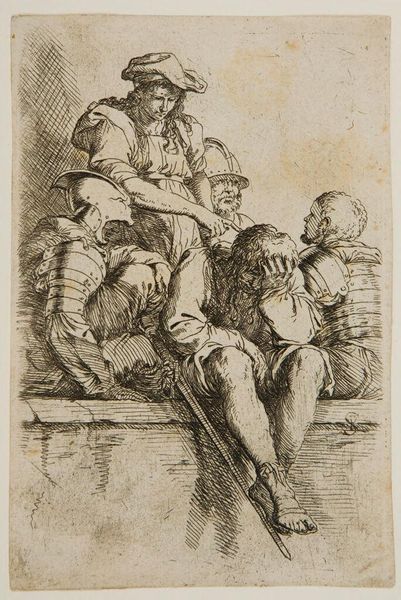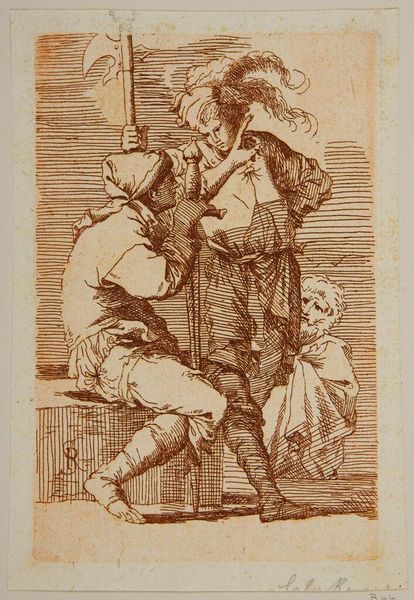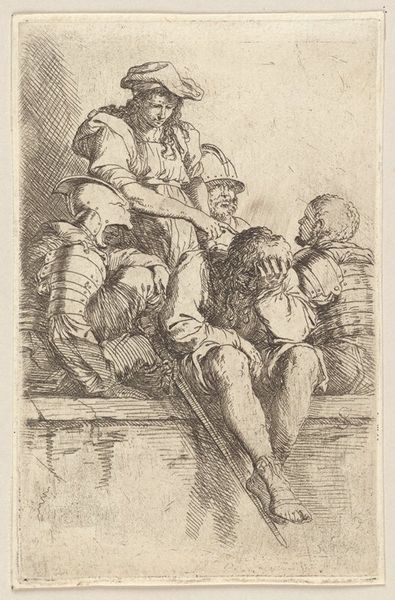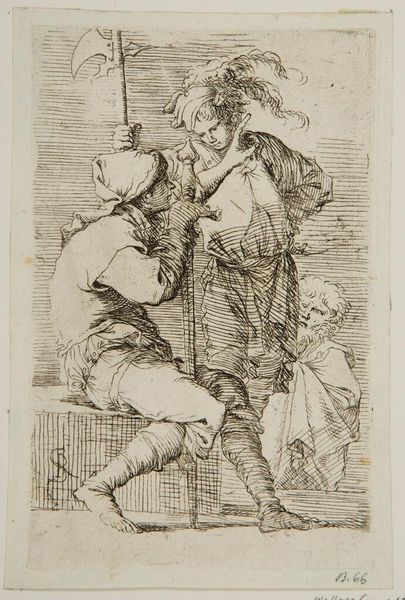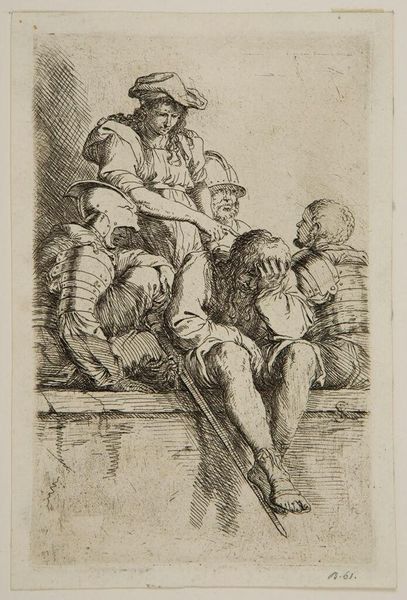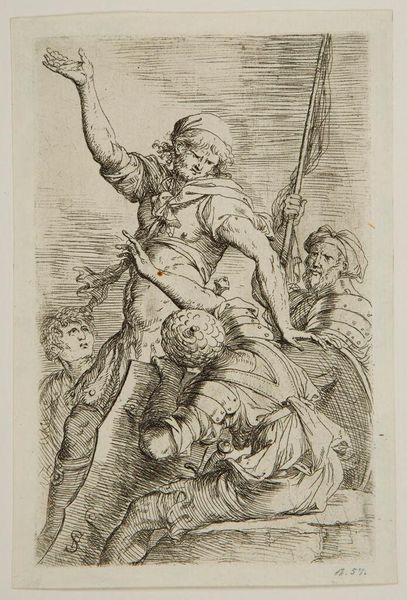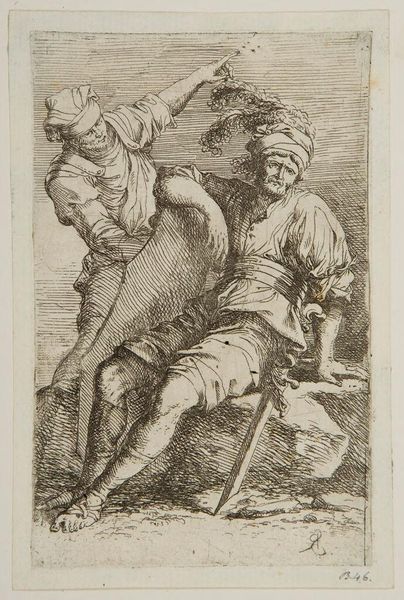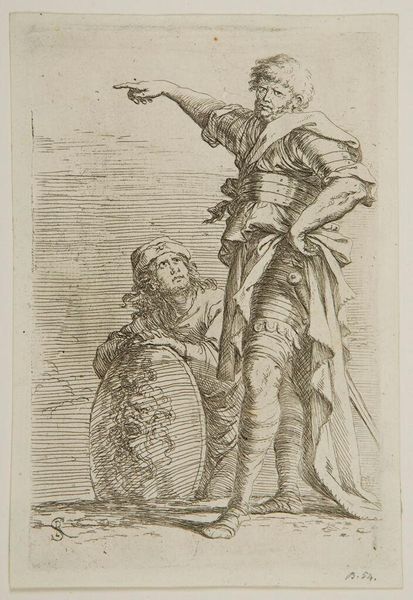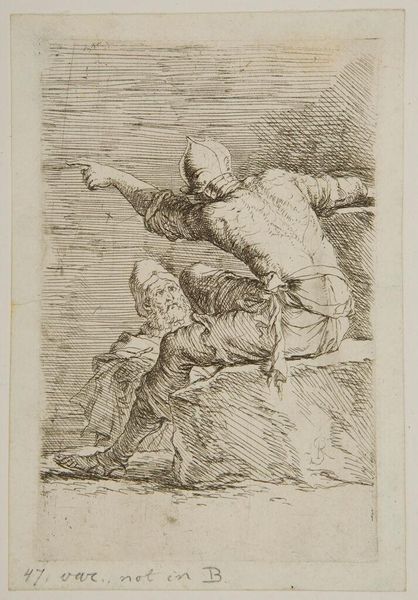
Copyright: CC0 1.0
Curator: This is Salvator Rosa’s “Copy after the Figurine.” Rosa, born in 1615, was a very interesting Baroque painter and printmaker. Editor: It's a somber, somewhat brutal scene. There’s a tension in the rendering; the lines are quick, not labored, but the composition has a deliberate weight. Curator: Considering Rosa’s involvement with political theater, I am sure it did have a weight, a significance at the time. What kind of figurines were being created, and for whom? Editor: Even without knowing the political context, I appreciate the immediacy of the lines. The hatching gives form to the figure's musculature and creates the illusion of depth, all with economy. Curator: Rosa's images often reflected dissatisfaction with social and political structures. Editor: I see that here, particularly in the hunched posture of the central figure and the faceless forms surrounding him. It speaks to oppression. Curator: Indeed, Salvator Rosa offered a unique voice in his time. Editor: Absolutely, and this print demonstrates how effectively line work can convey complex emotional and social realities.
Comments
No comments
Be the first to comment and join the conversation on the ultimate creative platform.


